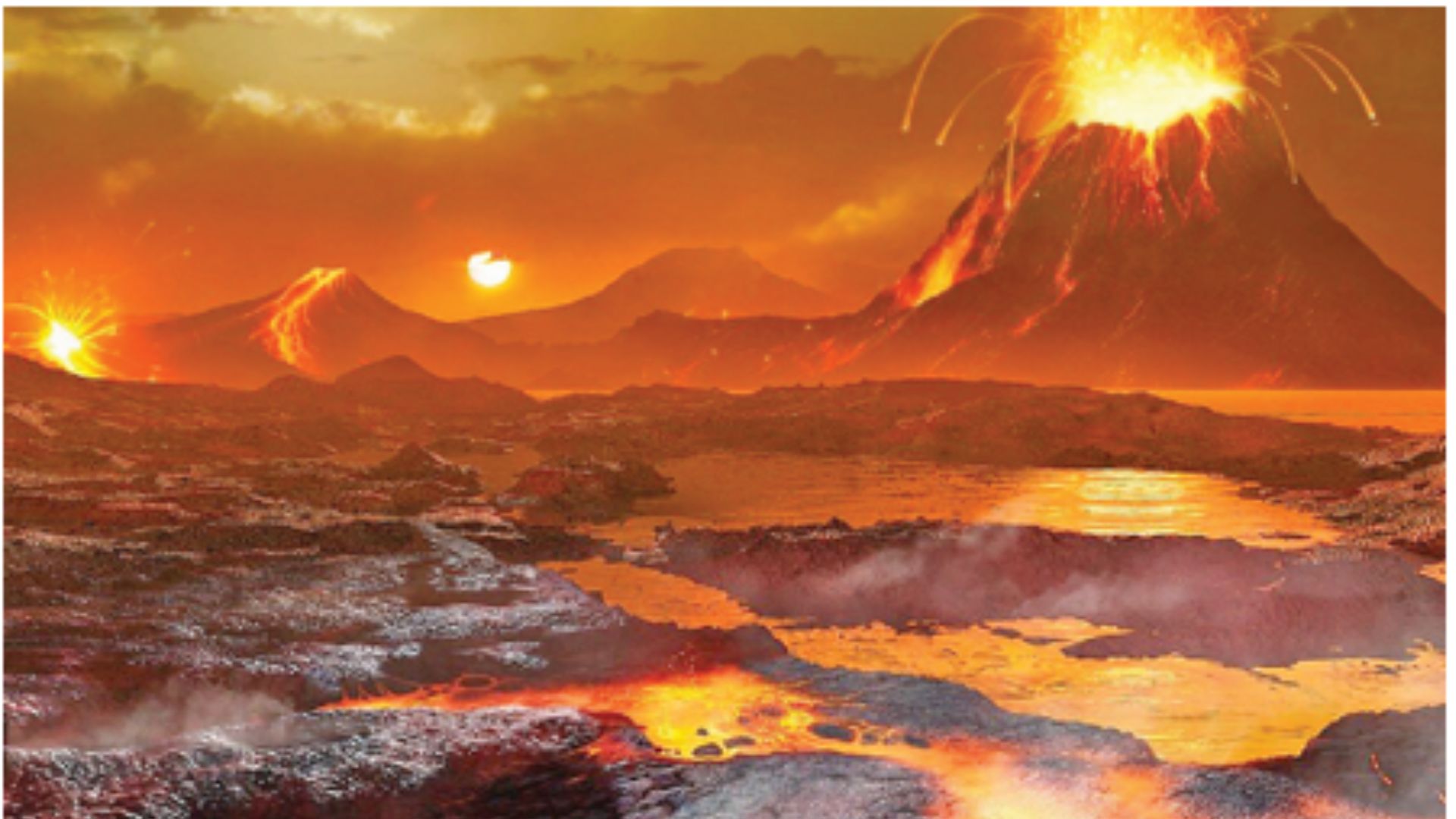Latest evidence suggests that Venus is more geologically active than previously believed. Researchers analysing decades-old data from NASA’s Magellan spacecraft have discovered signs of volcanic eruptions from the early 1990s. These findings mark the second instance of direct geological evidence indicating recent volcanic activity on Venus, hinting that the planet could be as geologically dynamic as Earth. Venus and Earth are nearly identical in size and both received similar amounts of water billions of years ago. This parallel raises questions about why Venus became inhospitable while Earth thrived. Understanding Venus’ volcanic activity, driven by internal heat, could provide insights into the divergent evolutionary paths of the two planets. The newly identified lava flows originated from two locations: the western slopes of Sif Mons, a massive shield volcano, and Niobe Planitia, a flat area with numerous volcanoes. Scientists, comparing these flows to those on Earth, estimate that the eruption at Sif Mons covered around 30 square kilometres, enough to fill approximately 36,000 Olympic swimming pools. The eruption at Niobe Planitia produced lava sufficient to fill about 54,000 Olympic pools. For context, the 2022 Mauna Loa eruption in Hawaii released enough lava to fill 100,000 Olympic pools. These findings underscore the significant volcanic activity that has shaped Venus’ surface. The recent discovery of lava flows on Venus is based on data from NASA’s Magellan spacecraft, which used radar to penetrate the planet’s thick, toxic atmosphere and reflect off its surface. These radar reflections, or backscatter, provide crucial information about Venus’ rocky terrain. Analysing Magellan’s data from 1990 to 1992, scientists observed an increase in signal strength during later orbits. They interpret this as evidence of bright, freshly formed rocks on the surface, likely solidified lava. This conclusion was reached after ruling out other potential explanations. The radar data reveals these new lava flows appear bright, suggesting they are relatively young and not yet eroded, or perhaps rougher than the older, smoother surrounding terrain. This supports previous findings, such as last year’s discovery of changes in the Maat Mons volcano near Venus’ equator, where an altered vent seemed to grow larger over eight months, likely due to an eruption-induced collapse. By interpreting these radar signals as indicative of fluid-like lava flows navigating around obstacles like shield volcanoes, scientists have strengthened the case for ongoing geological activity on Venus. This new evidence builds on previous research, offering further insights into the planet’s dynamic geological processes.
From the analogical lens
The juxtaposition of Venus and Earth offers a captivating study in geological divergence. Despite their comparable size and proximity to the sun, these sib ling planets showcase dis tinct volcanic landscapes, each shaped by unique geo logical processes. On Earth, volcanic activity is a dynamic force, shaped by the movement of tectonic plates and the presence of hotspots. The largest active volcano, Mauna Loa in Hawaii, exemplifies Earth’s diverse volcanic topography. Rising over 4,000 metres above sea level, Mauna Loa sprawls across an area exceeding 5,000 square kilometres, its gentle slopes formed by the fluid flow of lava. Other notable eruptions, such as Mount Tam bora in 1815 and Mount St. Helens in 1980, serve as stark reminders of the pro found impacts volcanoes can have on Earth’s climate and landscapes. In contrast, Venus boasts a landscape dominated by colossal shield volcanoes, such as Sif Mons and Maat Mons. These immense structures, stretching for hundreds of kilometres and rising several kilometres above the surrounding plains, testify to the planet’s tumultuous volcanic history. Recent discoveries, including the identification of lava flows from the early 1990s, suggest that Venus may experience frequent eruptions, albeit with variations in intensity and scale. The underlying causes of volcanic activity on each planet provide further insight into their geological evolution. On Earth, the movement of tectonic plates and the presence of mantle plumes drive volcanic eruptions, creating diverse volcanic landscapes. In contrast, Venus lacks active plate tec tonics, relying instead on in ternal heat sources such as hotspots and mantle plumes to fuel volcanic activity. This fundamental difference in planetary dynamics shapes the nature and frequency of volcanic eruptions observed on each world. The aftermath of volcanic eruptions on Earth and Venus underscores the profound impact of these geological events. While Earth’s eruptions can trig ger ash clouds, pyroclastic flows, and climate-altering effects, Venus’ dense atmosphere and high surface temperatures contribute to a unique set of post-eruption phenomena. Although direct observations of Venusian eruptions are limited, radar data from the Magellan spacecraft has revealed significant surface changes indicative of ongoing volcanic activity. Reflecting on historic eruptions on both planets offers valuable perspective on the dynamic nature of volcanic processes. From the cataclysmic eruption of Mount Tambora in 1815 to the dramatic lateral blast of Mount St. Helens in 1980, Earth’s volcanic history is rich with examples of geological upheaval. In contrast, Venusian eruptions, though less directly observed, leave their mark on the planet’s surface, re shaping landscapes and influencing atmospheric dynamics.
Largest eruptions and the inevitable impact
On Earth, the eruption of Mount Tambora in 1815 stands as one of the most significant volcanic events in recorded history. Located in present-day Indonesia, Tambora unleashed a cataclysmic eruption that ejected immense volumes of ash, gas, and debris into the atmosphere. The eruption column reached heights of over 40 kilometres, casting a shadow over vast swathes of the planet and triggering a global climatic phenomenon known as the “Year Without a Summer.” The eruption’s aftermath was felt far and wide, with widespread crop failures, famine, and social unrest recorded across the Northern Hemisphere. Similarly, the eruption of Krakatoa in 1883 ranks among Earth’s most iconic volcanic events. Situated in the Sunda Strait between Java and Sumatra, Kraka toa’s eruption produced a series of cataclysmic explosions that reverberated around the world. The blast was heard over 4,800 kilometres away, and the resulting tsunamis devastated coastal communities, claiming tens of thousands of lives. The eruption also injected massive amounts of volcanic ash and gas into the atmosphere, leading to spectacular sunsets observed worldwide in the years that followed. While direct observations of Venusian eruptions are limited, radar data from the Magellan spacecraft has provided insights into the planet’s volcanic history. Among the most notable events is the eruption of Maat Mons, a massive shield volcano near Venus’ equator. Although the exact timing of the eruption remains uncertain, changes observed in the volcano’s vent suggest ongoing geo logical activity. The eruption likely involved the release of lava and volcanic gases, con tributing to surface changes and atmospheric dynamics on Venus. The impacts of these monumental eruptions extend far beyond their immediate surroundings, shaping the geological and climatic trajectories of their respective planets. On Earth, volcanic eruptions play a crucial role in shaping landscapes, re plenishing soil fertility, and influencing global climate patterns. However, they can also pose significant hazards to human populations, with the potential for wide spread devastation and loss of life. Similarly, Venusian eruptions, though less directly observed, have left their mark on the planet’s sur face and atmosphere. The release of volcanic gases, such as sulphur dioxide, can alter Venus’ thick cloud cover and contribute to atmospheric dynamics. These eruptions also play a role in resurfacing Venus’ terrain, shaping the planet’s geology over time. The divergent volcanic landscapes of Earth and Venus stand as testament to the dynamic forces shaping our celestial neighbours. From the towering peaks of Mauna Loa to the colossal shield volcanoes of Sif Mons and Maat Mons, each eruption leaves an indelible mark on the surface and atmosphere of its respective planet.
Vaibhav Agrawal is a Senior Defence Journalist and Editor at Business Upturn. He covers complex issues surrounding subjects like Space, Defence & Geopolitics. He can be reached at vaibhavmag1@gmail.com






















